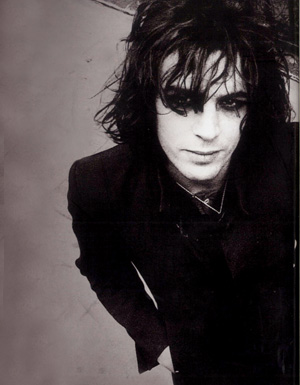

I HAVE ALWAYS been a fan of irregular people, so when a new biography of Syd Barrett emerged late last year titled A Very Irregular Head, I chose to consume the 400-page work over an entire weekend.
Author Rob Chapman succeeds at deconstructing many oft-exaggerated mythologies and much assumed wisdom surrounding Pink Floyd’s original leader. He talked to ex-girlfriends and former grammar schoolmates, as well as acquaintances from art school who hadn’t previously discussed their experiences with Barrett in public.
For the regular readers out there, Barrett was Pink Floyd’s original frontman, songwriter and the twisted genius behind the band’s first album, The Piper at the Gates of Dawn. He was an undisputed pioneer of the ’60s English psychedelic scene and the driving force behind Floyd’s early improvisational soundscapes.
The shorthand version of his story is that he became an acidhead, his mental faculties deteriorated and he could no longer contribute, so the band squeezed him out after one album. With the band’s assistance, he then recorded more of his own material, completed two solo albums and then retired into obscurity for decades until his death in 2006. Significant portions of Pink Floyd’s catalog—including Dark Side of the Moon, Wish You Were Here and The Wall—were admittedly about Syd.
Chapman digs even deeper and comes to a refreshingly sympathetic conclusion. Barrett, he deduces, wasn’t really influenced by rock music that much at all. His lyrical influences came almost entirely from English children’s literature by authors like Edward Lear, Kenneth Grahame, Hilaire Belloc and Lewis Carroll. Turns out each of those authors suffered the loss of a parent at an early age, as did Syd. In a drop-dead gorgeous passage, here’s the author: “Certain themes recur throughout their work directly as a result of these early traumatic losses. Disembodied identity, a dreamlike sense of the self in limbo without place of purpose, rootlessness, restlessness, rejection, detachment, escapism, retreat into imaginary worlds, the past recounted in reverie, the lost grandeur of classicism and antiquity, faded or unreachable Arcadia, protracted childhood and the potency of myth—all crop up time and time again and in many guises, as they do through Syd Barrett’s songs.”
Barrett went to Camberwell College of Arts in south London and was primarily a painter influenced by collage methods, as well as the text-cutup techniques of sound poets like Bob Cobbing. At that time, Syd crisscrossed with AMM, the British pioneers of electroacoustic free-improvisation. In that group, Keith Rowe pioneered the use of prepared electric guitar, manipulating the strings with unorthodox techniques—an approach Syd identified with.
Barrett had an almost pathological aversion to discipline of any sort, and his disaffection with the pop star routine had much to do with an unguided, directionless life that didn’t gel with the responsibilities of TV appearances, interviews and tours.
Drugs played a major role in his mental condition, of course, but Chapman paints a picture of someone who essentially just couldn’t deal with the suffering caused by the pressures of fame. As a result, he retreated into anonymity and obscurity, where he felt more comfortable. It is sad story. Towards the end of his life, Syd returned to painting, his original love. After completing each painting, he would photograph the finished product and then burn the canvas.
By forces of habit and nature, I tend to relate everything to my own landscape, and San Jose’s equivalent of Syd Barrett would undoubtedly be Skip Spence of Moby Grape. Skip was likewise an underappreciated musical genius, influencing many who went on to become much huger than he ever did. Like Syd, Skip also became disenfranchised with rock stardom and fell victim to drugs. As early as 1970, Skip was envisioning his own rock opera, to be performed in a geodesic venue. I hope that someday we can see a sympathetic portrait of him as well.
By Rob Chapman
Da Capo Press; $28



